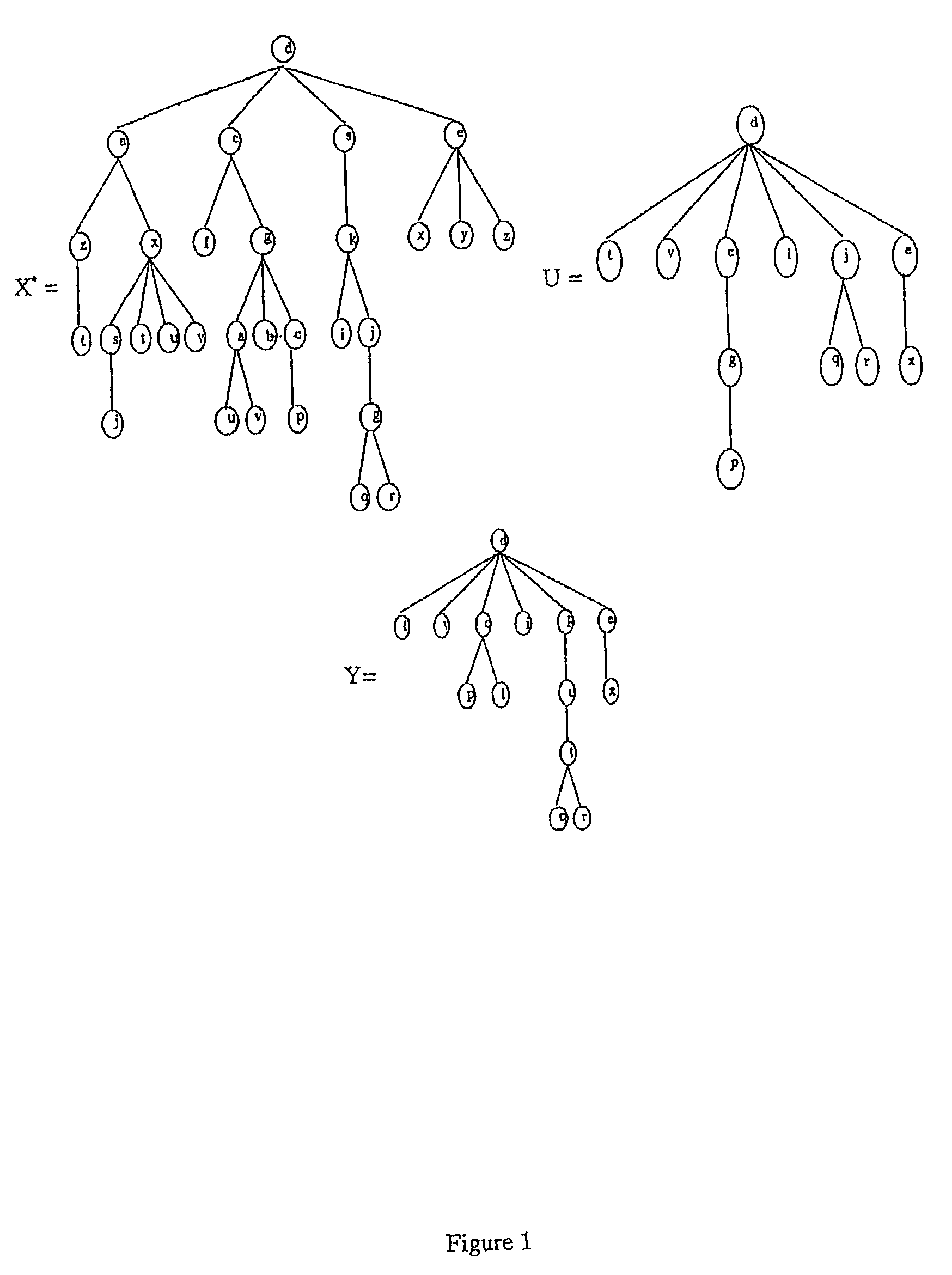Method of comparing the closeness of a target tree to other trees using noisy sub-sequence tree processing
a sub-sequence tree and target tree technology, applied in the field of pattern recognition, can solve the problems of inability to calculate, inability to compute, and inability to compare the closeness of a target tree to other trees, and achieve the effect of reducing the complexity of the sub-fragment, and improving the accuracy of the target tr
- Summary
- Abstract
- Description
- Claims
- Application Information
AI Technical Summary
Benefits of technology
Problems solved by technology
Method used
Image
Examples
example i
[0243]The NsuT Recognition technique developed in the previous sections has been rigorously tested to verify its capability in the pattern recognition of NSuTs. The experiments conducted were for two different data sets which were artificially generated. To test the methods adequately, “relatively long” character sequences using benchmark results involving keyboard character errors have been resorted to. It will presently be made clear that these results are sufficient to demonstrate the power of the strategy to recognize noisy subsequence trees. It would be a rather trivial and straightforward exercise for an expert in the field to obtain equivalent results for biological molecules and for the other applications explained herein.
[0244]The results obtained for simulated trees are the first reported results that demonstrate that a tree can indeed be recognized by processing the information resident in one of its noisy random subsequence trees. The details of the experimental set-ups ...
example ii
[0252]In the second experimental set-up, the dictionary, H, consisted of 100 trees which were generated randomly. Unlike in the above set (in which the tree-structure and the node values were manually assigned), in this case the tree structure for an element in H was obtained by randomly generating a parenthesized expression using the following stochastic context-free grammar G, where,[0253]G=, where,[0254]N={T, S, $} is the set of non-terminals,[0255]A is the set of terminals—the English alphabet,[0256]G is the stochastic grammar with associated probabilities, P, given below:[0257]T→(S$) with probability 1,[0258]S→(SS) with probability p1,[0259]S→(S$) with probability 1−p1,[0260]S→($) with probability p2,[0261]S→λ with probability 1−p2, where λ is the null symbol,[0262]$→a with probability 1, where a∈A is a letter of the underlying alphabet.
[0263]Note that whereas a smaller value of p1 yields a more tree-like representation, a larger value of p1 yields a more string-like representa...
PUM
 Login to View More
Login to View More Abstract
Description
Claims
Application Information
 Login to View More
Login to View More - R&D
- Intellectual Property
- Life Sciences
- Materials
- Tech Scout
- Unparalleled Data Quality
- Higher Quality Content
- 60% Fewer Hallucinations
Browse by: Latest US Patents, China's latest patents, Technical Efficacy Thesaurus, Application Domain, Technology Topic, Popular Technical Reports.
© 2025 PatSnap. All rights reserved.Legal|Privacy policy|Modern Slavery Act Transparency Statement|Sitemap|About US| Contact US: help@patsnap.com



